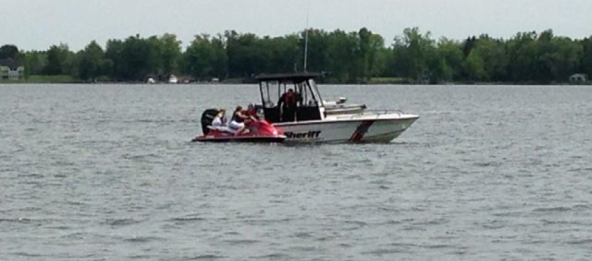With Halloween on Monday, it’s getting to be the time of year that people decide to put their watercraft to bed. We were blessed to have a long, hot, and dry riding season this year and our machines need some TLC before they get to take that long winter’s nap. While we provide winterization at our service shop, we understand some people like to take the wrench to their own machines too. Here are some tips to ensure the long life of your watercraft.
We recommend storing your craft with gas in the tank (the fuller the better) in order to reduce the risk of condensation forming. You should add fuel stabilizer to the tank. If you have a four stroke, add fuel injector cleaner. On a two stroke, check the water/fuel separator and note if there is any water.
If you have a four stroke, lightly fog the motor through the intake track. If you have a Sea Doo, you will need to check to see if it requires antifreeze to cooling loop.
If you have a fuel valve, turn the fuel valve to the off position. After 5-10 minutes, remove the air box cover and spray fogging oil into the carburetors with the engine running. Then you should test multiple throttle positions, from idle to half throttle or until it stalls, meaning the fuel is out of the carburetors. Shut off the motor and reinstall the air box cover. If you have a Sea Doo, you will need to check to see if it requires antifreeze to cooling loop.
Start the craft, turn on water, and let the craft run for 5-10 minutes. After you’re done, it is crucial to turn the water off before you turn the engine off.
All crafts will need to have their battery removed, detaching the negative terminal first. Store your batter in a non-freezing environment. We recommend partially charging your battery a few times throughout winter to keep from prematurely killing your battery.
Next you’ll need to clean your watercraft thoroughly. This will get harmful algae and dirt off before it can do serious damage to your hull. Degrease and steam clean the interior of the craft, while washing the outside of your craft with warm water and soap. Thoroughly rinse and dry your craft. Ensure that your remove all water from the interior of the craft. Spray the interior with a silicone-based spray and lube the steering cable, choke, and throttle. Make sure you’ve reinstalled all bolts or other parts that you removed. Nothing is worse than getting a job done and seeing a mystery part sitting on the bench!
Finally, cover your watercraft to keep unwanted pests out and keep it clean. If you lack a space for storage, we do have space we rent out at our storage facility. You will need to do separate maintenance when you get ready to ride in the spring. We can help you out with that or check this blog for tips!




